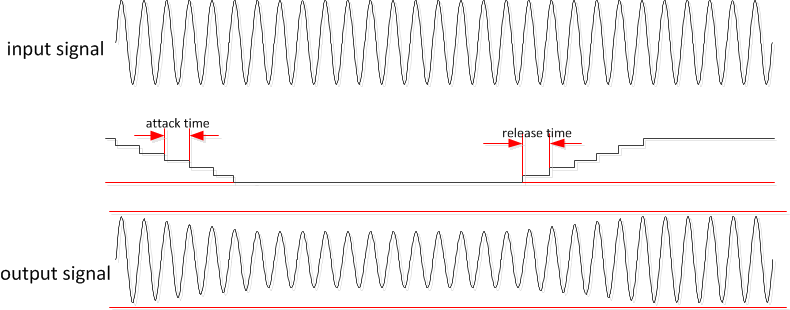JAJSKR7B September 2019 – December 2020 TPA6304-Q1
PRODUCTION DATA
- 1 特長
- 2 アプリケーション
- 3 概要
- 4 Revision History
- 5 Pin Configuration and Functions
- 6 Specifications
- 7 Parameter measurement information
-
7 Detailed Description
- 7.1 Overview
- 7.2 Functional Block Diagram
- 7.3
Feature Description
- 7.3.1 Single-Ended Analog Inputs
- 7.3.2 Gain Control
- 7.3.3 Class-D Operation and Spread Spectrum Control
- 7.3.4 Gate Drive
- 7.3.5 Power FETs
- 7.3.6
Load Diagnostics
- 7.3.6.1
DC Load Diagnostics
- 7.3.6.1.1 Automatic DC Load Diagnostics at Device Initialization
- 7.3.6.1.2 Automatic DC Load Diagnostics During Hi-Z to MUTE or PLAY Transition
- 7.3.6.1.3 Manual Start of DC Load Diagnostics
- 7.3.6.1.4 Short-to-Ground
- 7.3.6.1.5 Short-to-Power
- 7.3.6.1.6 Shorted Load and Open Load
- 7.3.6.1.7 Line Output Diagnostics
- 7.3.6.2 AC Load Diagnostics
- 7.3.6.1
DC Load Diagnostics
- 7.3.7 Power Supply
- 7.3.8 Device Initialization and Power-On-Reset (POR)
- 7.3.9 Protection and Monitoring
- 7.3.10 Hardware Control Pins
- 7.4
Device Functional Modes
- 7.4.1 Internal Reporting Signals
- 7.4.2 Device States and Flags
- 7.4.3 Fault Events
- 7.4.4 Warning Events
- 7.5 Programming
- 7.6 Register Maps
- 8 Application Information Disclaimer
- 9 Power Supply Recommendations
- 10Layout
- 11Device and Documentation Support
パッケージ・オプション
メカニカル・データ(パッケージ|ピン)
- DDV|44
サーマルパッド・メカニカル・データ
- DDV|44
発注情報
7.3.9.5.3 Thermal Gain Foldback (TGFB)
The TGFB circuitry is designed to protect the TPA6304-Q1 from reaching excessive die temperatures. By default, the TGFB is enabled and the device automatically reduces the gain and thereby output power when either the global Over Temperature Warning Event (OTW) or any channel Over Temperature Warning Event, OTW(i) is active. Simultaneously on all channels, the gain is stepped down in 0.5 dB steps with a max attenuation of 12 dB. The gain increases as the temperature is reduced by the same gain step. The attack and release time of the TGFB can be programmed.
The Thermal Gain Foldback Control Register controls whether TGFB is enabled, the rate of gain reduction (attack) and the rate of gain increase or recovery (release). Pop free gain changes are controlled by enabling a zero crossing detector. The zero crossing has a wait time before the gain can change. By default, TGFB and zero crossing detector are enabled with a wait time of 20 µs. Zero Crossing behavior can be adjusted in the Thermal Gain Foldback Control Register. When Thermal Gain Foldback is engaged, that is when the gain is lower than 0 dB a Thermal Gain Foldback Warning Event is created.
 Figure 7-6 Thermal Foldback Attack and Release
Figure 7-6 Thermal Foldback Attack and Release